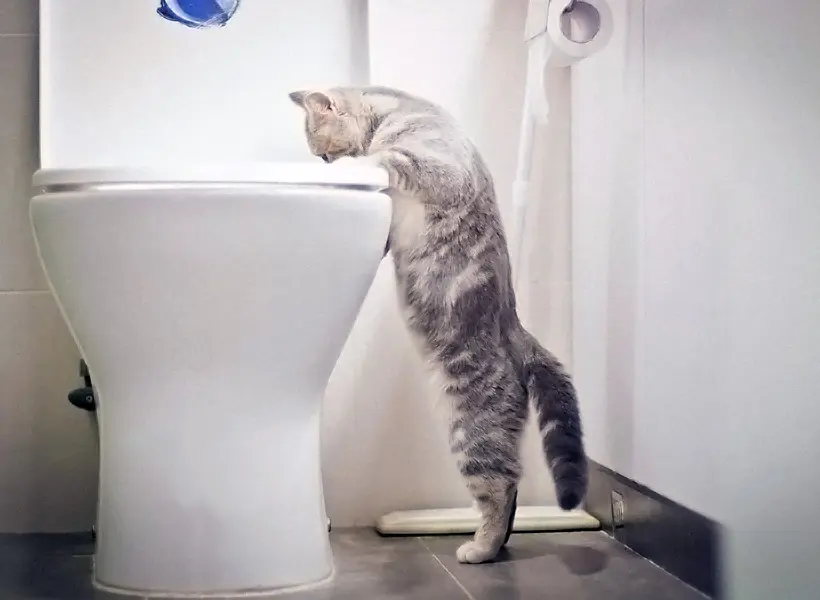Avoid Flush Cat Poop Down Your Toilet - Preserve Your Home's Plumbing System
Avoid Flush Cat Poop Down Your Toilet - Preserve Your Home's Plumbing System
Blog Article
Just how do you actually feel in regards to Don’t flush cat feces down the toilet?

Intro
As pet cat proprietors, it's necessary to bear in mind how we dispose of our feline good friends' waste. While it might seem convenient to flush pet cat poop down the bathroom, this practice can have damaging effects for both the environment and human health and wellness.
Alternatives to Flushing
The good news is, there are more secure and extra liable means to dispose of pet cat poop. Take into consideration the adhering to options:
1. Scoop and Dispose in Trash
The most common approach of disposing of pet cat poop is to scoop it into a naturally degradable bag and throw it in the trash. Be sure to use a dedicated litter inside story and dispose of the waste immediately.
2. Usage Biodegradable Litter
Opt for naturally degradable pet cat litter made from products such as corn or wheat. These trashes are eco-friendly and can be securely dealt with in the garbage.
3. Bury in the Yard
If you have a backyard, think about hiding cat waste in an assigned area far from veggie yards and water resources. Be sure to dig deep sufficient to avoid contamination of groundwater.
4. Set Up a Pet Waste Disposal System
Purchase a pet garbage disposal system particularly developed for feline waste. These systems make use of enzymes to break down the waste, reducing smell and ecological effect.
Wellness Risks
Along with environmental worries, flushing cat waste can additionally position health and wellness risks to people. Feline feces may include Toxoplasma gondii, a bloodsucker that can create toxoplasmosis-- a possibly serious health problem, particularly for pregnant women and people with weakened immune systems.
Ecological Impact
Purging cat poop introduces hazardous microorganisms and parasites into the supply of water, posing a significant risk to water ecological communities. These pollutants can adversely influence aquatic life and compromise water high quality.
Final thought
Accountable pet dog ownership extends beyond giving food and sanctuary-- it also includes correct waste monitoring. By avoiding purging pet cat poop down the commode and opting for alternate disposal methods, we can decrease our ecological impact and safeguard human health.
Why Can’t I Flush Cat Poop?
It Spreads a Parasite
Cats are frequently infected with a parasite called toxoplasma gondii. The parasite causes an infection called toxoplasmosis. It is usually harmless to cats. The parasite only uses cat poop as a host for its eggs. Otherwise, the cat’s immune system usually keeps the infection at low enough levels to maintain its own health. But it does not stop the develop of eggs. These eggs are tiny and surprisingly tough. They may survive for a year before they begin to grow. But that’s the problem.
Our wastewater system is not designed to deal with toxoplasmosis eggs. Instead, most eggs will flush from your toilet into sewers and wastewater management plants. After the sewage is treated for many other harmful things in it, it is typically released into local rivers, lakes, or oceans. Here, the toxoplasmosis eggs can find new hosts, including starfish, crabs, otters, and many other wildlife. For many, this is a significant risk to their health. Toxoplasmosis can also end up infecting water sources that are important for agriculture, which means our deer, pigs, and sheep can get infected too.
Is There Risk to Humans?
There can be a risk to human life from flushing cat poop down the toilet. If you do so, the parasites from your cat’s poop can end up in shellfish, game animals, or livestock. If this meat is then served raw or undercooked, the people who eat it can get sick.
In fact, according to the CDC, 40 million people in the United States are infected with toxoplasma gondii. They get it from exposure to infected seafood, or from some kind of cat poop contamination, like drinking from a stream that is contaminated or touching anything that has come into contact with cat poop. That includes just cleaning a cat litter box.
Most people who get infected with these parasites will not develop any symptoms. However, for pregnant women or for those with compromised immune systems, the parasite can cause severe health problems.
How to Handle Cat Poop
The best way to handle cat poop is actually to clean the box more often. The eggs that the parasite sheds will not become active until one to five days after the cat poops. That means that if you clean daily, you’re much less likely to come into direct contact with infectious eggs.
That said, always dispose of cat poop in the garbage and not down the toilet. Wash your hands before and after you clean the litter box, and bring the bag of poop right outside to your garbage bins.
https://trenchlesssolutionsusa.com/why-cant-i-flush-cat-poop/

Do you really like reading up on Don’t flush cat feces down the toilet? Try leaving a comment down the page. We will be pleased to hear your views about this post. We are looking forward that you come back again soon. Loved our post? Please share it. Let someone else check it out. We truly appreciate reading our article about How to Dispose of Cat Poop and Litter Without Plastic Bags.
Rates Report this page